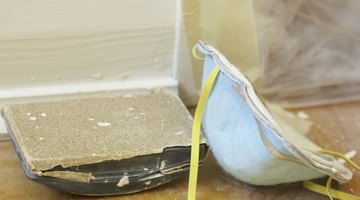Causes for a Baseboard Separating From the Wall
Home improvement projects are always cheaper when you do them yourself, but there is always the risk that certain processes will be forgotten or ignored due to a lack of relevant skill associated with an installation.

If your baseboards are separating from the wall it is likely due to an installation error of some kind, although old age can be an issue if you have been living in the home for many years.
Insufficient Adhesive
One of the leading causes of baseboards separating from the wall is a lack of adhesive. When you are installing baseboard, you always need to cover the backs of the baseboards with sufficient adhesive. This ensures total coverage to bond with the wall and work in conjunction with the nails for the perfect adhesion that will last for years.
Insufficient Nails
Similar to using plenty of wood glue or adhesive behind each piece of baseboard before it is placed on the wall, you also need to ensure there are sufficient nails used during the installation. Adhesive is only half of what keeps the baseboards on the wall and if there aren’t enough nails used it can lead to the baseboard separating from the adhesive and the wall over time.
Wrong Adhesive Type
If the wrong type of adhesive is used, it will generally fail within months, if not weeks. There are dozens of types of adhesive to choose from depending on the type of baseboard you are installing and it is important to use the correct type. Wood baseboards will require a wood adhesive while plastic baseboards cannot be installed with wood adhesives. Always plan ahead accordingly so you use the proper components for your baseboard installation.
Adhesive Wearing
All materials are subject to wear and tear over time. While adhesives are rated to last between 20 and 30 years, as a general rule they will eventually wear out and need to be replaced. If your baseboards are falling off the wall with crusty, hard adhesive behind them, it is because the adhesive originally used has faded over time and no longer provides any support.
The Drip Cap
- Home improvement projects are always cheaper when you do them yourself, but there is always the risk that certain processes will be forgotten or ignored due to a lack of relevant skill associated with an installation.
- Adhesive is only half of what keeps the baseboards on the wall and if there aren’t enough nails used it can lead to the baseboard separating from the adhesive and the wall over time.
- All materials are subject to wear and tear over time.
Writer Bio
Tim Anderson has been freelance writing since 2007. His has been published online through GTV Magazine, Home Anatomy, TravBuddy, MMO Hub, Killer Guides and the Delegate2 group. He spent more than 15 years as a third-generation tile and stone contractor before transitioning into freelance writing.
Photo Credits
- Jupiterimages/Photos.com/Getty Images
- Jupiterimages/Photos.com/Getty Images
More Articles



